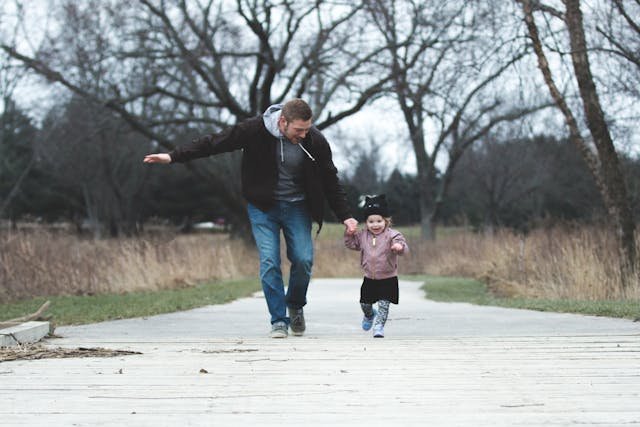Introduction:
Parenting is a journey full of pleasures, difficulties, and limitless potential for development. One of the most important skills that parents can develop is effective behavior control via constructive discipline. Positive discipline is a parenting style that teaches children self-control, responsibility, and problem-solving skills while fostering a loving and respectful relationship. In this post, we’ll look at the benefits of positive discipline and effective behavior management tactics that support healthy growth and solid parent-child relationships.

Creating A Positive Environment:
The core of positive discipline is to provide a pleasant and loving atmosphere in which children feel secure, loved, and respected. By creating a supportive environment, parents may encourage collaboration and open communication while reducing conflict and bad conduct.
Build Trust and Connection: Through careful listening, empathy, and caring gestures, you may cultivate a deep emotional connection with your kid. Spend valuable time together, have meaningful talks, and show unconditional love and acceptance.
Set Clear Expectations: Communicate your expectations for behavior, routines, and family norms in a calm and consistent way. Set rules and consequences with your kid, and make sure they understand why they are in place.
Encourage Positive Behavior: When your kid exhibits collaboration, compassion, and responsibility, reinforce it with praise, encouragement, and prizes. Instead of obsessing on bad behaviors, focus on the ones you want to see more of.
Setting Limits and Boundaries:
Positive discipline is establishing clear and strong boundaries to govern children’s conduct while recognizing their autonomy and uniqueness. Setting boundaries helps youngsters learn what is appropriate conduct while also developing self-control and respect for others.
Use Positive Language: Frame regulations and directions in a positive, transparent, and polite manner. Instead of stating “don’t run,” use “let’s walk calmly” to highlight the desired behavior.
Offer Choices: Give children age-appropriate options to empower them and foster collaboration. For example, instead of telling them what to dress, give them two alternatives.
Consistency is key: To create a predictable and fair environment, enforce rules and punishments consistently. Consistency allows youngsters to grasp expectations and eliminates uncertainty and frustration.

Teaching Problem Solving Skills:
Positive discipline teaches youngsters critical problem-solving and conflict-resolution skills that will help them control their emotions and navigate social relationships more successfully.
Encourage empathy and perspective-taking in youngsters to help them comprehend the effect of their actions on others. Encourage them to think about how their actions influence others’ emotions and well-being.
Modeling Healthy Conflict Resolution: Use constructive conflict resolution tactics such as gently addressing issues, listening to each other’s points of view, and finding mutually acceptable solutions. Display good communication and problem-solving abilities in your relationships with others.
Encourage Reflection and Learning: Rather of punishing children, encourage them to reflect on their actions and the consequences. Ask open-ended inquiries to assist them understand the reasons for their choices and come up with alternate tactics for future scenarios.
Building on Effective Positive Parenting Strategies:
Reinforcement of positive behavior
Reinforcing good conduct is an essential component of positive discipline. Instead of concentrating primarily on bad conduct, parents should aggressively praise and recognize their child’s good acts. This may be verbal praise, stickers, a unique privilege, or a modest prize. Parents urge their children to replicate these positive habits.
Time-in rather than time-out:
While time-outs are a popular punishment technique, some parents prefer the notion of a “time-in.” This is spending time with the youngster in a quiet setting to address the event, the emotions involved, and how they might make apologies or handle the situation better the next time. Time-ins emphasize education over punishment, building emotional intelligence and problem-solving abilities.
Consistent consequences:

Consistency is essential in constructive discipline. When a rule is breached, it is critical to impose appropriate and consistent consequences. Consequences should be appropriate for the conduct, reasonable, and presented gently. Whether it’s a loss of privilege, a duty, or an apology, consistency helps youngsters grasp the consequences of their behavior.
Empowerment via Choice:
Giving children options empowers them and develops independence while retaining parental supervision. Giving children options within realistic bounds helps them feel in control and responsible for their decisions. Instead of insisting that kids tidy their room right away, parents might provide the option of cleaning now or after completing a desired activity.
Active listening and validation.
Active listening entails totally interacting with your kid as they express themselves. It entails giving them your whole attention, establishing eye contact, and respecting their emotions and perspectives. Validating their feelings demonstrates empathy and compassion, even if you disagree with their actions. This promotes trust and enhances the parent-child relationship.

Teachable Moments:
Positive discipline sees every circumstance as a chance to grow. Instead of responding quickly to misbehavior, parents might see problems as teaching opportunities. This includes calmly addressing the topic, determining the consequences of the conduct, and cooperatively developing alternate solutions. Parents may help their children make great choices by emphasizing learning and development.
Promote Emotional Regulation:
Emotions influence conduct, particularly in youngsters who are still learning emotional management abilities. Positive discipline focuses on helping children notice and regulate their emotions constructively. This might include teaching relaxation methods, deep breathing exercises, or providing a calm-down area where children can go to unwind and gather themselves when they are feeling overwhelmed.
Encourage problem-solving discussions.
Encouraging problem-solving talks allows youngsters to take an active part in resolving disagreements or obstacles. Instead of imposing answers, include your kid in a collaborative approach that allows them to explore ideas and evaluate other viewpoints. This not only teaches vital problem-solving skills, but it also instills a feeling of ownership and accountability for one’s actions.
Use natural consequences:
Natural consequences come from a child’s activities in the absence of parental interference. These repercussions are closely tied to the conduct and provide excellent learning opportunities. For example, if a youngster refuses to wear a jacket on a chilly day, they may get uncomfortable. Allowing children to experience natural consequences helps them comprehend the relationship between their acts and the results.
Practice Patience and Persistence.
Positive discipline demands parents to be patient and persistent. Behavior change takes time, and setbacks are unavoidable. It is critical to stay cool and consistent in your approach, especially when confronted with problematic actions. Continue to guide your kid with love and compassion, and remember that growth may be slow but eventually gratifying.
Foster a growth mindset.
Encouraging a growth mindset in children fosters resilience and confidence in their potential to learn and grow. Teach children that intellect and talents are not fixed attributes, but can be developed with work and determination. Encourage a love of learning, recognize their efforts and success, and underline the value of perseverance in overcoming hurdles.
Seek support and resources:
Parenting may be difficult, and it’s OK to seek help and assistance when necessary. Whether it’s joining a parenting group, attending courses or seminars, or consulting with a trusted expert, don’t be afraid to seek help. Surround yourself with a supporting network of family, friends, and experts who can provide direction and encouragement as you navigate your parenting path.
Conclusion:
Positive discipline is an effective parenting strategy that stresses respect, understanding, and collaboration. Parents may successfully regulate their child’s behavior while also nourishing his or her emotional growth and self-esteem by providing a good atmosphere, setting clear expectations, and teaching vital life skills. Parents may create solid, trusting connections with their children by being patient, consistent, and focusing on teaching rather than punishing. Read more
Celebrating Multiculturalism The International Baby and the Grace of Naming Decisions
Frequently Asked Questions about Positive Discipline:
What is positive discipline, and how does it vary from standard disciplinary methods?
Positive discipline is a parenting style that teaches children self-control, responsibility, and problem-solving skills while fostering a loving and respectful relationship. good discipline, as opposed to conventional techniques of discipline that depend on punishment and coercion, focuses on encouragement, reinforcement of good conduct, and teaching alternatives to undesirable actions.
How can I include good discipline into my parenting approach?
good discipline is fostering a loving and supportive atmosphere, setting clear expectations, providing options within reasonable bounds, encouraging good conduct, and teaching problem-solving skills. It also requires active listening, empathy, and consistency in applying policies and punishments.
Is positive discipline beneficial for children of any age?
Yes, constructive discipline may benefit children of all ages, from infants to teens. However, ideas and approaches may differ based on the child’s developmental stage and specific requirements. Positive discipline methods may be tailored to handle age-appropriate behaviors and obstacles.
What should I do if my child’s conduct does not change after employing positive disciplinary strategies?
If your child’s conduct does not change after utilizing positive disciplinary techniques, you should reconsider your approach and seek extra help if necessary. Consider speaking with a physician, therapist, or parenting coach who can provide advice and tactics customized to your child’s individual need.
How can I deal with problematic behaviors without resorting to punishment?
Managing tough behaviors without resorting to punishment entails being cool, establishing clear expectations, providing options, and using positive reinforcement. Instead of concentrating on bad conduct, turn your child’s attention to more suitable choices and teach them coping methods.
Is it OK to create limitations and boundaries while practicing constructive discipline?
Yes, creating limits and boundaries is an important part of constructive discipline. Children benefit from clear and consistent limits because they give structure and direction, as well as assist them grasp expectations and consequences. However, restrictions should be enforced in a fair and empathic manner, with an emphasis on educating rather than commanding.
How can I strike a balance between being tough and loving in positive discipline?
Balancing firmness and nurturing entails setting clear standards and punishments while also offering warmth, support, and encouragement. Setting limits and enforcing rules with empathy and understanding is key, since children flourish in environments where they feel loved, respected, and supported. Read more
Can constructive discipline improve the parent-child relationship?
Yes, effective discipline may assist to enhance parent-child relationships by encouraging trust, communication, and mutual respect. Parents may foster strong, loving relationships with their children via active listening, empathy, and constant reinforcement of good conduct.



